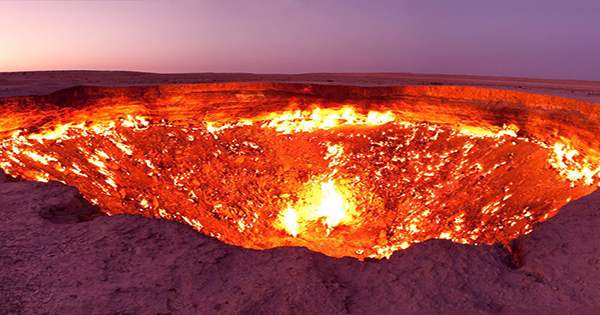The earth has been living since the last ice age. Then, by normal climatic standards, it suddenly recedes, Around 13,000 ago. This was a time when the cycles in the Earth’s orbit were in favor of continuous warming. Several recent studies have pointed to sharp cooling as the cause of the collision of the poor constant or asteroid. But new evidence fits better with large volcanic eruptions.
Alan Brandon, a professor at the University of Houston, reads the silt from the Halls Cave in Central Texas. Like other places in the world, the cave preserves evidence of a fairly rapid fall of about 3 degrees Celsius (5.4ºF). In science, however, Brandon states that the same sediments have recorded something else: he thinks he has discovered rare metals from volcanic eruptions. These metals, including osmium, iridium, and platinum, have not been seen in deposits for the first time in ages, but previous researchers have traced their origins to outer space.
Brandon said in a statement, “This work shows that the geochemical signature associated with the cooling event is not unique but occurred four times between 9,000 and 15,000 years ago.” If the cause of the Younger Dryas’ were asteroids, it would be more water than the object that killed non-avian dinosaurs. Even so, owning one is still beyond the reach of the average person. It’s not the kind of thing that can hit four times in a thousand years.
On the other hand, like a large volcanic eruption bus, you can go for a long time without seeing anyone, and then several come together. This led to the volcanic conclusions of Brandon and other authors of the paper with the Assamese isotope ratio, as in some volcanic provinces that are much more understandable than asteroids or comets.
The temperature of a volcanic planet may have a warming or cooling effect depending on a variety of factors. See Germany’s Laacher the volcanic eruption spread at the beginning of the young Dryas, although most climate experts suspect that it caused such a large event on its own. Other rare metal spikes may be associated with rupture of the Aleutian and Cascade.
The Younger Dryas had two low temperatures before the event, as the world emerged from the last glacier, at least one of which could be met with a metal spike. It is not yet clear whether Brander claims to have seen the eruption of Laacher with cooling sulfur dioxide like Mount Tambora.
However, with the Earth’s climate being subtly prepared, the authors felt a temporary cooling that greatly expanded the snow cover and reflected more sunlight into space whose effects were even greater. The Younger Dries event is one of the biggest mysteries of paleoclimatology, along with Snowball Earth and the Paleocene-Eocene Thermal Maximum, all of which have caused dramatic changes in Earth’s temperature, the causes of which remain controversial.
Although the asteroid/comet theory has recently gained support, the failure to confirm the veracity of a hole despite Greenland’s candidacy has made it truly a matter for scientists.















